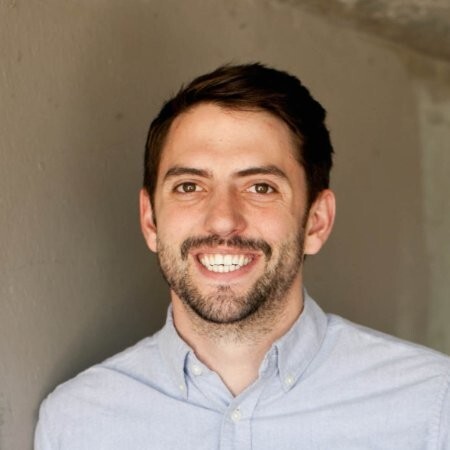The healthcare industry in the U.S. can feel like a slow moving, bureaucratic, dysfunctional mess. But the question is: What is the best way to activate a digital transformation that leads to better care for people? Sean Duffy, the Co-founder and CEO of Omada Health, suggests that fitting innovative digital care into the current model is the best strategy to make the most constructive change.
Main Takeaways
- Providing Proactive Care: Proactive care is difficult in the current in-person model; in part, because care is associated as occurring mostly during in-person experiences. Digital care through Omada operates differently in that Omada’s support team is able to provide monitoring without reliance on in-person office visits for the majority of care. Omada also provides prescriptions for monitoring devices and ships them right to the patient.
- Working Within the System: Given the longstanding structures of the U.S. healthcare system, it is important that companies looking to innovate appreciate the realities of the system and be willing to work inside it in order to make changes. For Omada Health, this even comes down to making semantic choices regarding care that best fit into the current healthcare lexicon.
- Creating a Culture of Innovation: With half a million users, Omada has been able to collect a lot of potentially useful data. Omada created the Omada Insights Lab in order to create a culture of innovation where its employees would use this trove of information in order to ask different questions and come up with solutions. Now, Omada has been able to open up this information to its customers so that they can also weigh in with their own ideas.
For a more in-depth look at this episode, check out the article below.
Article Notes
The healthcare industry in the U.S. can feel like a slow moving, bureaucratic, dysfunctional mess. But the question is: What is the best way to activate a digital transformation that leads to better care for people? Sean Duffy, the Co-founder and CEO of Omada Health, suggested that fitting innovative digital care into the current model is the best strategy to make the most constructive change.
“I’ve grown centered with a truth, which is there are just immutable laws of physics in the U.S. healthcare system,” Duffy said. “You have to make what you do fit in and get creative around it. Don’t pretend that there’s going to be some magic new implementation strategy that’s going to work. We’re dealing with decades of regulatory and technological infrastructure in the U.S. healthcare system that you got to fit into.”
If a city has parks, that’s a good thing because the intention is for people to enjoy nature and outdoor activity. If the parks have some problems, like graffiti on the playground equipment or the lawns are not regularly mowed, the solution is not to raze all the parks to the ground. Instead, it’s to work within the city’s government in order to make things better. The same thing is true for healthcare. Accepting the realities of the healthcare system is an initial step to making adjustments to make care better for everyone.
On a recent episode of IT Visionaries, Duffy explained how Omada Health is working within the U.S. healthcare system to improve experiences and outcomes for patients. He described how Omada is able to use the data it is accumulating to make adjustments in patient care. Duffy also shared how his unique career trajectory has put him in a position in order to foster connections between the tech and healthcare industries.
The main issue in the healthcare system are the hurdles people must go through to get the support they need.
“The system can put so many operational burdens on people,” Duffy said. “…You need to come in and get your A1C tests. You should book an appointment. That doesn’t work, especially in diseases where they tend to be not highly symptomatic. So you can have diabetes and you might not feel it, but just bit by bit, minute by minute, your body, and the micro tissue in your body, it’s rusting…So in that world, you’ve got your kid’s soccer practice at 3:00 PM on a Thursday. You’ve got to manage dinners, childcare, COVID, [and] work. The idea that you’re going to pull up and spend the time and call and spend 15 minutes on hold with the office staff to book an appointment three weeks out for your primary care doc to just have a look at how your sugars are doing, that’s not going to happen. People fall through cracks. The idea is, well, let’s just reverse that. Let’s bring as much care as humanly possible into the pocket and make it as easy as possible. All you need to do is sign up. We got the rest. We’re constantly watching out for you in a proactive way; helping understand your goals. And we’ve got your back, day by day.”
Furthermore, Duffy detailed Omada’s process for caring for someone with diabetes.
“Firstly, we’re writing you a [perscription] for a continuous glucose monitor,” Duffy said. “We’re mailing you a cellular connected scale, a blood pressure cuff, [and] a blood glucose meter. You don’t have to go anywhere. It arrives. It’s pre-configured over the cellular network just to work with your account. There’s no pairing with your wifi network. So you get your CGM. You self apply it. That’s called a continuous glucose monitor. It’s a little patch. You put it on your arm. It gives a real-time feed of your blood glucose readings. You’re opening the app experience. You’re meeting your primary health coach. You’re meeting your certified diabetes educator. They’re reviewing the data as it comes in. You don’t even need to proactively look. They’re looking for you, and they’re bringing back insights. They may notice that you need a medication change based on the sugar readings. Instead of saying, ‘We need you to book an appointment with your primary care doc.’ They say, ‘How about one of our clinicians just does it right now for you;’ in the exact same app experience. You’re doing a chat. You don’t even need [to, but] you can do a video call or voice call — the doctor’s evaluating your CGM readings, and your medication needs by chat, and pushes it right to your pharmacy.”
To further its mission, the Omada Insights Lab was created to use all the data Omada has accumulated in order to innovate.
“It’s cross-disciplinary in a data science meets product meets engineering [way] to all work together to answer some questions that only we could answer to innovate in ways that you could only do when you hit scale,” Duffy said.
Although the Omada Insights Lab began primarily for employees to tease out different questions, it eventually opened up for customers to participate.
“But what we have observed is in bringing people into the fold, everyone can think through [these issues],” Duffy said. “We’re all aligned here. The country needs better health outcomes in these areas and customers might have unique populations that we could learn in new ways on. They might have unique data sets, unique systems, and unique approaches that could amplify what we do. It’s actually furthered our partnerships with our key clients and health plans in really healthy, positive ways.”
Duffy described how motivating it is to see the current difficulties in healthcare yet the hope for making a difference in people’s lives.
“Someone needs to try to get beyond any challenge here and give this a go for the country,” Duffy said. “And you abstract yourself out of it. You imagine a baseball field and you’re like, ‘Do you want somebody and some company swinging really hard at this problem?’ Then if the answer is, ‘Yes,’ you just get a little bit extra boost in determination in healthcare, despite the extra headwinds.”
To hear more about how Omada Health keeps swinging for digital innovation while playing inside the rules of the healthcare game, check out the full episode of IT Visionaries!
IT Visionaries is brought to you by the Salesforce Platform – the #1 cloud platform for digital transformation of every experience. Build connected experiences, empower every employee, and deliver continuous innovation – with the customer at the center of everything you do. Learn more at salesforce.com/platform




